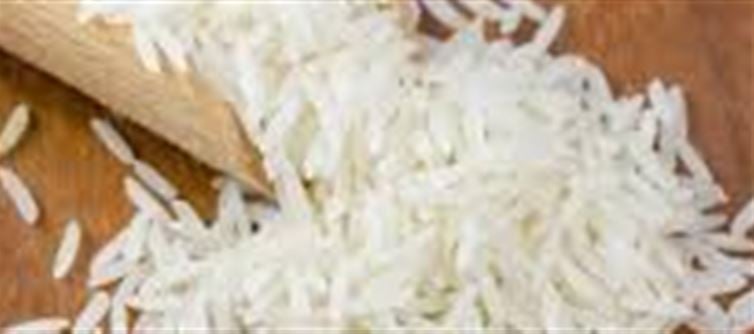
Food adulteration is a significant concern for many consumers today, and rice, a staple food in countless households, has become an easy target for adulteration. Recently, there have been increasing reports of fake rice flooding the markets, which is often made using synthetic materials, harmful chemicals, and even plastic. Consuming such rice can lead to serious health risks. Here’s how you can detect adulteration and ensure the rice you’re eating is safe and authentic.
What is Fake Rice?
Fake rice is a deceptive version of regular rice, which may look like authentic grains but is actually made from non-food substances, such as plastic or synthetic starch. Some unscrupulous vendors may also add harmful chemicals to polish the rice to make it appear whiter and more appealing. Consuming such rice can cause digestive issues, food poisoning, or even long-term health problems.
Simple Ways to Detect Rice Adulteration at Home
You don’t have to rely on fancy testing kits or laboratories to determine if your rice is adulterated. Here are some easy, DIY tests that can help you identify fake rice before cooking:
1. The Water Test
How to Do It:
· Take a small bowl and fill it with water.
· Add a handful of rice to the water and stir.
· Real rice will settle at the bottom, while plastic or fake rice will float on top.
Why It Works:
Fake rice, especially plastic rice, is lighter than real rice, which is why it tends to float on water. This simple test can quickly tell you if your rice is potentially adulterated.
2. The Heat Test (Flame Test)
How to Do It:
· Take a few rice grains and place them on a flame (a lighter or matchstick will do).
· Let the grains burn for a few seconds.
· Real rice will burn with a smell of burnt starch, whereas plastic rice will melt and release toxic fumes.
Why It Works:
Plastic rice will not burn in the same way as organic rice; it will melt, which is a clear indication of adulteration.
3. The raw Rice Test (Smell Test)
How to Do It:
· Take a handful of uncooked rice.
· Smell the rice carefully.
· Real rice will have a mild, earthy aroma, while fake rice might have a chemical or plastic smell.
Why It Works:
The presence of synthetic materials in fake rice will often result in an unnatural, pungent odor.
4. The Crushing Test
How to Do It:
· Take a few rice grains and crush them between your fingers.
· Real rice will break into pieces or turn into a fine powder.
· Fake rice will feel hard and plastic-like and will not crush easily.
Why It Works:
The texture of fake rice is much harder than authentic rice. When crushed, real rice tends to break down, while fake rice will remain firm due to its synthetic material.
5. The Cooking Test
How to Do It:
· Cook a small batch of rice in the usual way.
· Real rice will absorb water, become soft, and expand properly.
· Fake rice may not cook well or will remain hard, even after prolonged boiling.
Why It Works:
Fake rice, especially the plastic variety, is often unable to absorb water or soften during cooking, leaving you with an odd texture.
6. The Freeze Test
How to Do It:
· Place a few grains of rice in a freezer for a couple of hours.
· After freezing, remove the rice and check for any changes.
· Real rice will remain unaffected, while fake rice may harden, or even become brittle.
Why It Works:
Plastic rice behaves differently under cold conditions, becoming hard or fragile, unlike authentic rice.
7. The Boiling Water Test
How to Do It:
· Boil a pot of water and add a handful of rice.
· Real rice will cook evenly and soften, while fake rice will either not cook or disintegrate when exposed to boiling water.
Why It Works:
Fake rice made from synthetic materials will not react to heat in the same way real rice does, which makes this test effective in identifying adulteration.
What to Do If You Find Adulterated Rice
If any of these tests indicate that your rice is fake, it’s important to discard it immediately. Consuming adulterated rice can lead to serious health issues, including food poisoning, gastrointestinal problems, and long-term toxicity. Here’s what you can do next:
· Report the seller: If you find fake rice, it’s crucial to report the source to the local food safety authorities to prevent others from buying it.
· Purchase rice from trusted suppliers: Always buy rice from reliable sources or stores that you trust. If possible, choose organic or certified rice brands.
· Inspect your rice: Regularly inspect the rice you buy for any signs of adulteration, even if it appears safe.
Conclusion
Fake rice is a growing concern, but with simple tests at home, you can ensure that the rice you’re eating is safe. By being aware of the signs of adulteration and performing these quick checks, you can protect yourself and your family from the harmful effects of rice contamination. Stay cautious, stay informed, and make sure your meals are free of harmful additives!
Disclaimer:
The views and opinions expressed in this article are those of the author and do not necessarily reflect the official policy or position of any agency, organization, employer, or company. All information provided is for general informational purposes only. While every effort has been made to ensure accuracy, we make no representations or warranties of any kind, express or implied, about the completeness, reliability, or suitability of the information contained herein. Readers are advised to verify facts and seek professional advice where necessary. Any reliance placed on such information is strictly at the reader’s own risk..jpg)




 click and follow Indiaherald WhatsApp channel
click and follow Indiaherald WhatsApp channel